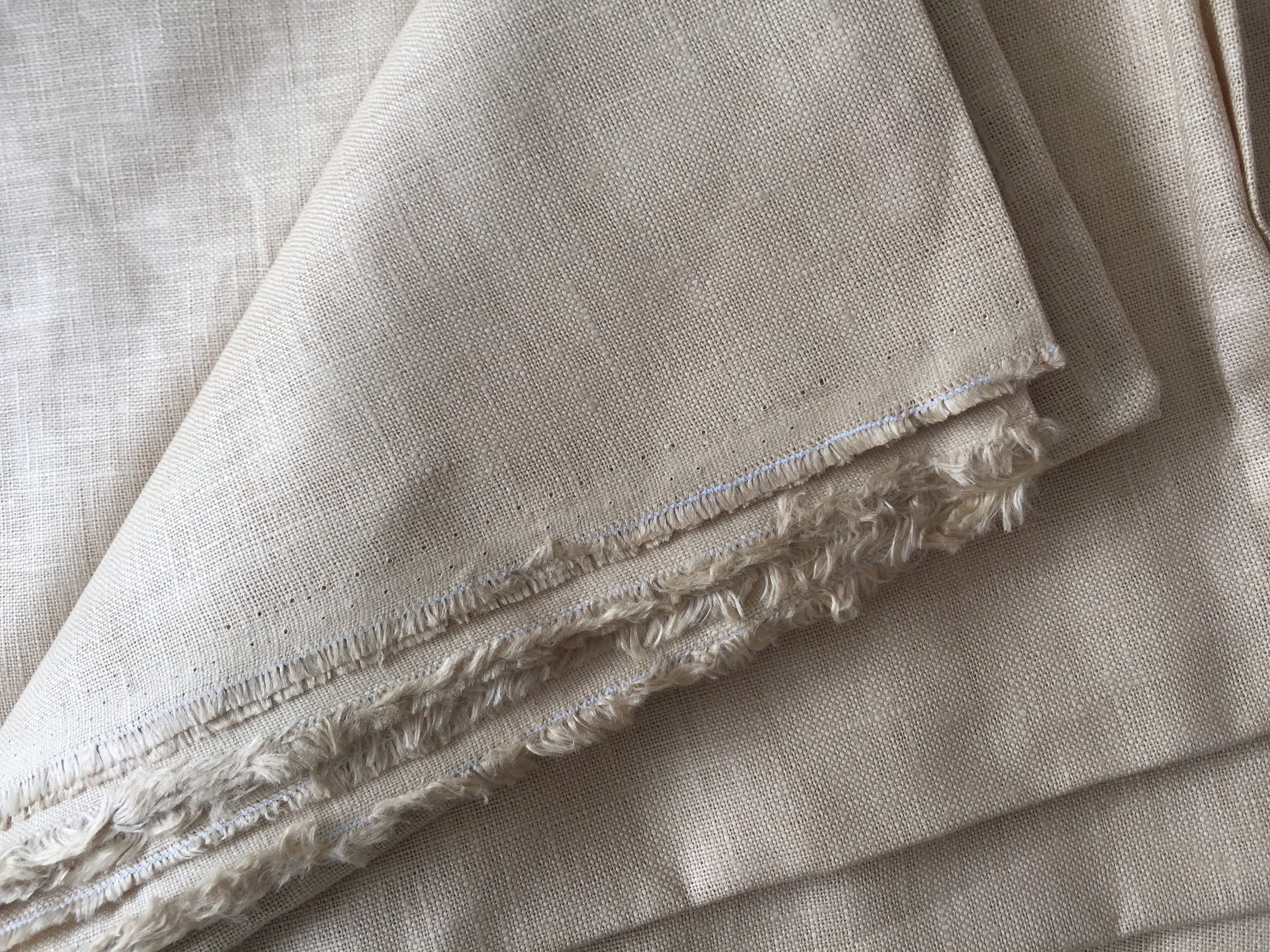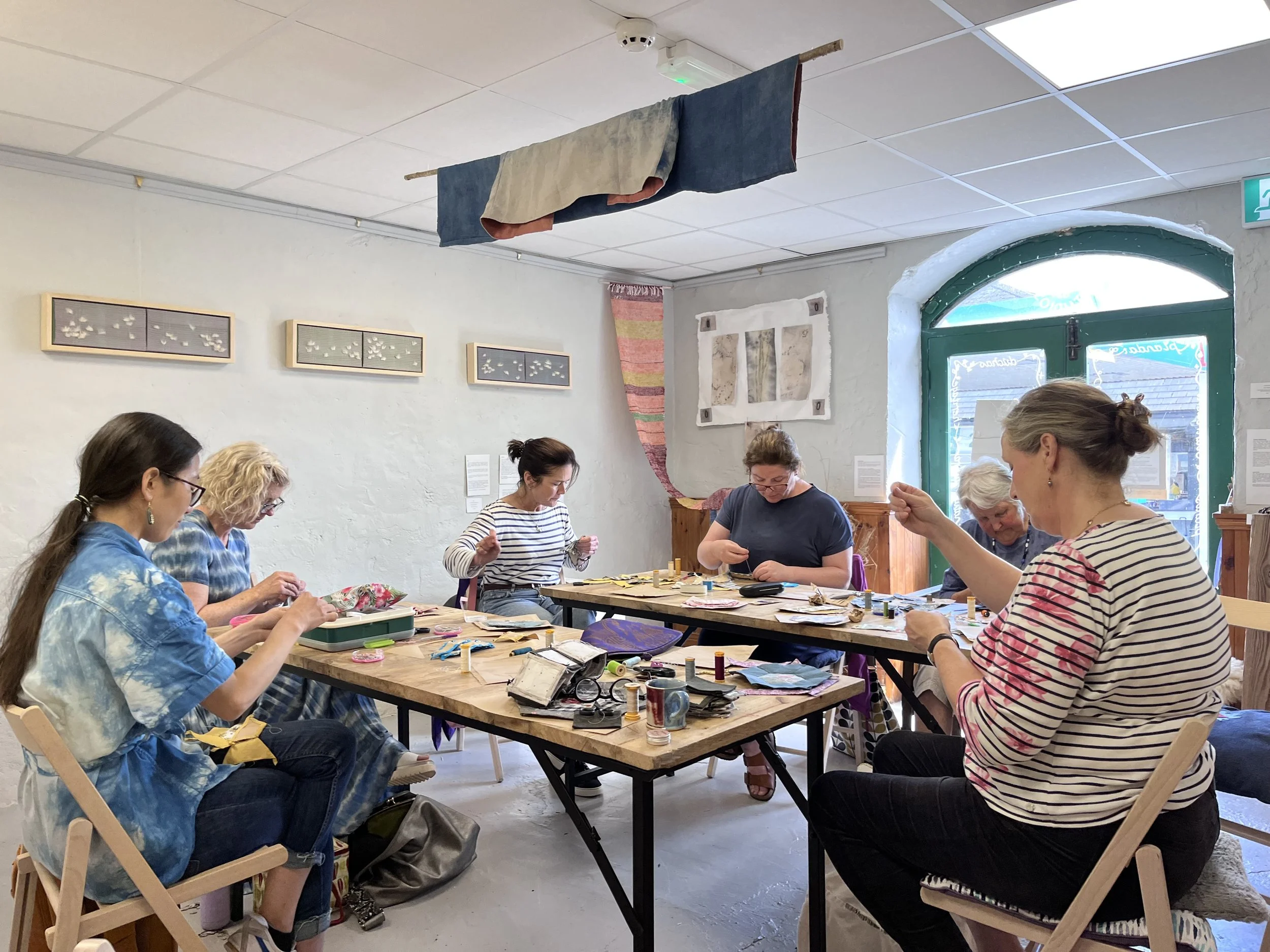How much do we know about the fabric our clothes are made of and it's environmental impact? Looking at the labels in our clothes will tell us whether they are made of natural fibres like cotton or wool or from synthetic fabrics derived from petrochemicals, such as nylon and polyester. There are various aspects to consider when understanding how ethical a fabric is, including the use of pesticides and fertilizers, water consumption and the pollution caused by treatments such as dying and printing the fabric. Fabrics made from petrochemicals are highly polluting and the production of these fabrics is a named cause of global warming; nitrous oxide is release during the manufacture of nylon and is a known powerful greenhouse gas. In addition they are non-biodegradable which means they don't break down easily and remain in landfill for centuries after they've been dumped.
Linen is one of the worlds oldest fabrics, dating back to 8000BC and the antithesis of nylon, polyester and other synthetics. It is believed that the flax plant, from which linen is made, was grown in Ireland as far back as 1000BC and there is certainly evidence that Irish linen clothing existed 2000 years ago. Linen clothing must have been widely worn by the population of Ireland in the 16th Century as Henry VIII wrote to the town of Galway telling them to cease using excess amounts in their shirts and smocks and the limit was set at 7 yards per garment. However, the decree was mostly ignored and up to 30 yards of linen was often incorporated and was very likely a necessary means to keeping warm in the damp Irish climate (although 30 yards seems like a huge amount for one smock).
Up to the early 1800's, Ireland was self -sufficient in growing flax for linen, but good cultivation practices were neglected and the quality suffered. Supplies of superior flax became available from Europe after the ending of the Napoleonic Wars and flax began to be imported from Belgium and Germany from this time. During the 20th Century, the arrival of man made fabrics caused linen to be regarded as old fashioned and demand for linen clothing fell. It was only at the latter part of the century that interest was revived in natural fibre fabrics and Irish Linen's unique quality appreciated. Nowadays, the term Irish Linen refers to fabric that has been woven or knitted in Ireland and contemporary Irish Linen is acknowledge worldwide as being of the highest quality
Irish linen isn't certified organic, but it's ethical credentials are good. The flax used is brought in from France, Belgium and the Netherlands, which means the workers and the environment are protected by EU laws regarding working conditions, pay and ecological impact. And the carbon footprint is low compared to importing the raw material from countries on the other side of the world. The cultivation of flax uses much less water and fewer pesticides than cotton. After harvesting, the crop is laid out in fields to 'ret' allowing the linen fibres to naturally separate, the seeds are removed and used for cattle cake or linseed oil and the bark is used for chipboard - no part of the flax plant is wasted. These are welcome practices for sustainability.
The fibres in linen fabric are very strong making it highly resistant to tearing and it's stability as a fabric means that garments retain their shape and don't shrink. The reason linen is so popular in summer is that it's light and cool to wear and conveniently absorbs perspiration, but there's no reason why it shouldn't be worn all year round. Linen clothes are easy to launder and will withstand numerous washes as the fabric actually becomes stronger when wet. If correctly looked after, linen clothing has the potential to last a very long time, which combined with coming from a renewable resource and being biodegradable, makes it an ultimate sustainable fabric.
A characteristic of linen is that it creases easily, although new technology is developing different finishes which are 'easier' to care for. The wrinkles identify linen as linen and you either love the look or you don't. I was brought up to think that creases were undesirable and fabrics that creased should be avoided or repeatedly ironed - perhaps the result of how the 'new' synthetic fabrics were marketed, back in the day. However, I've come to love the creases in linen; when you first put on a freshly laundered linen garment it's crisp and a little stiff. After an hour, the first creases stand out like lone footprints in the sand. By the end of the day, the garment has softened, draping in a way that only linen does with tiny, multiple creases that crisscross, reflecting the life lived that day. Of course, polyester doesn't crease and never needs ironing, but where is the sense of history and charm in that?
Irish Linen is durable, but it's durability is meaningless unless we rethink our attitude to clothes shopping and how we regard our clothes. The number of clothes that we buy has increased massively in recent decades. Clothes shopping has evolved so that buying as many items for as little as possible has become something to boast about. The reality is that we've been persuaded by clothing brands and the media that this buying habit is a good thing, something to be commended, but the reality is that it's not right; in so many ways, it's really not ok. We need to begin valuing each individual garment in our wardrobe, starting by choosing something that we truly love wearing, then taking care of how we launder and maintain it when it needs repairing. It is a different way of thinking about the clothes we own and Irish Linen, with it's heritage and elegance, should merit a place.













